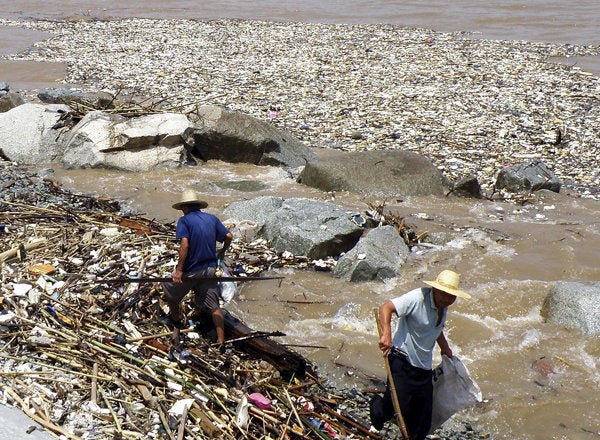
I recently spoke at a Wall Street Journal ECO:nomics session titled "China: Friend or Foe of Green Capitalism"?
No doubt it's a complicated question.
Home to a staggering one-fifth of the world's population, China has been growing rapidly for the past three decades. This growth has come at the expense of the country's environment. China faces massive deforestation, deadly air pollution and disappearing wetlands. It is the biggest emitter of greenhouse gases. If current trends continue, water stress may force millions of environmental refugees from their homes, in search of a basic necessity.
Yet there are reasons for cautious optimism.
Increasingly, China's government, business leaders and average citizens understand that continued economic growth and social stability will rely on a healthy environment.
In 1998, for example, devastating floods in the Yangtze River Basin killed thousands of people, left millions homeless and caused more than $25 billion in economic loss. When scientists found that deforestation played a major role in the flooding, China's government immediately halted all tree cutting in the upper portion of the river. They recognized that the important services trees provide -- reducing soil erosion, improving water quality and mitigating the risks of flood damage -- are worth three times the trees' value in timber. The country now boasts the world's most ambitious reforestation program, planting billions of trees a year.
Admittedly, China's logging ban along the Yangtze led to illegal logging elsewhere throughout the region. The country initially denied any culpability. Today, however, China is playing an increasingly important role in the global effort to promote responsible forest management and the trade in legal timber products. For example, it is one of eight countries working with The Nature Conservancy, WWF and others as part of the Responsible Asia Forestry and Trade (RAFT) program, a USAID-funded initiative to strengthen every aspect of Asia's timber trade -- from corporate practices to public policy. And here in the US, a 2008 amendment to the Lacey Act prohibiting trade in illegal timber is further pushing China, which dominates the global wood processing industry, to take steps to exclude illegally harvested and sourced timber from its own markets.
China's businesses also increasingly recognize the value of healthy, functioning natural systems. Consider the country's huge dam industry. Already home to nearly half of the world's dams, by 2020 China plans to more than double its hydropower capacity. These new dams will provide energy for millions, but can have serious impacts on ecosystems and the fish supplies that sustain those same people. For instance, if China goes ahead with the proposed Xiaonanhai dam above Chongqing, it would devastate the largest nature reserve on the Yangtze.
That's why my organization, The Nature Conservancy, is working with dam builders, including the China Three Gorges Corporation, to help design and operate dams in ways that minimize environmental impacts. We have found that restoring wetlands downstream not only soaks up floodwaters and provides important wildlife habitat, but also allows dam operators to elevate the level of the reservoir behind a dam and produce more power. The revenue from that added power will more than pay for the wetland restoration. It's a great win-win for nature, people and business.
Myanmar provides an interesting contrast. Last year, the country's government indefinitely suspended the Chinese-backed $3.6 billion Myitsone dam project on the Irrawaddy River -- in part because important environmental considerations were ignored in the dam's planning. The decision was a wake-up call to Chinese companies and officials. Chairman of the China Power Investment Corporation Lu Qizhou acknowledged, "Chinese companies should learn from this experience to better cooperate with nongovernmental organizations in foreign countries." His statement is an encouraging sign of a growing awareness among China's business leaders. They understand that higher environmental standards can have a positive impact on a company's bottom line.
The Nature Conservancy is fortunate to have many of these environmentally-aware leaders on our China Board of Trustees. Although formed less than three years ago, the group is already making an enormous impact. In Sichuan Province, the Board helped set up a foundation to protect Panda habitat, using an innovative land trust model that is already attracting attention elsewhere in China. And their commitment to conservation extends beyond China's borders. China Board members are raising millions of dollars for a Global Conservation Fund designed to match US donor support to high-impact conservation projects around the world.
These leaders are just a few of the millions of voices in a growing call to environmental action among Chinese citizens. After the U.S. Embassy began tweeting hourly air quality readings from its compound in Beijing, angry residents launched a public campaign to demand more accurate reporting from the Chinese government. Those voices were a key factor in China recently adopting a more honest and accurate way of describing air quality than the system used to date.
To be sure, China's environmental challenges are enormous. But as the country's government, businesses and ordinary citizens increasingly recognize the link between healthy natural systems and the country's prosperity, we have an equally big opportunity to help the country achieve a sustainable future.
